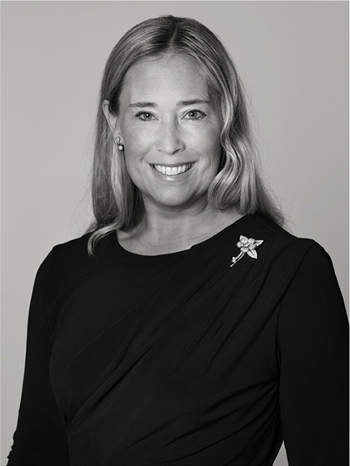A porcelain floor tile, Ming dynasty (1368-1644).
Central motif of a lotus seed capsule, around the center lappets and cloud formations. Measure 23x23x3.5 cm.
Chips, wear.
Provenance
From the collection of Dag Malm (1923-2008). Thence by descent. Dag Malm was born in 1923 in Rahlstadt Germany. His father was a Swedish businessman operating in Argentina and his mother Norwegian. Dag grew up in Germany but moved to Sweden when the Second World War broke out. In 1947 he was employed as an attaché in the Foreign Ministry and had placements in Washington, Tokyo, Beijing and New York. In 1964–1967 he served as ambassador in Kinshasa. In the late 1940’s he works as an attache in Tokio. He is then sent to Beijing were he works with the Swedish Ambassador Thorsten Hammarström (Ambassador of Nanking 1947, and In Beijing from 1950). He writes in his memoires about life in China at the time, how he purchases antiques and art, how the social life was with the other countries delegates. When Sweden appoints Staffan Söderblom as an ambassador, they spend a lot of time with the the British representative Sir Lionel Lamb and his wife sine Staffans wife Marjorie is British and becomes a great friend of theirs. Dag Malm writes that when he leaves China in 1953 he writes to Wai Chou Pu, the ministry of foreign affairs to seek permission to bring furniture and works of art with him. He continues to have a long international diplomatic career, was appointed head of office at the Swedish Committee on Foreign Affairs in 1971, and in 1975 he was inspector of the foreign administration and head of expedition/head of the Ministry of Foreign Affairs' administrative department 1978–1981. In 1981-88 he was ambassador in Vienna. After his retirement, he settled down in Södermanland, and was often hired as expert adviser and worked with translations. Dag Malm passed away in 2008, age 85.
Exhibitions
Compare floor tiles most possibly from the same floor, in the British Museum, Museum number 1993,1027.1-2.
Harrison-Hall wirtes in 2001:
Stylistically the tiles relate to Islamic motifs found on Chinese pilgrim flasks and 'lianzi' [lotus-seed] bowls made in the Xuande era. The concentric pattern of overlapping ovals is repeated on a Xuande mark and period covered cloisonne box in the Pierre Uldry Collection. Part of a tile with the same design, but reversed with white decoration on a blue ground, was excavated at Jingdezhen at Dongyuan, Zhushan, in 1993. Other blue-and-white tiles unearthed there confirm that the present tiles were made at the imperial factory in the Xuande era. It is possible that these unusual tiles belong to a group made to order for a Near Eastern customer. In his memoirs the Mughal emperor Babur (died 1525) refers to Timur's (1336-1405) grandson Ulugh Beg (1394-1449), who served as governor of the provincial Central Asian capital of Samarkand from 1409 and went on to rule the empire in the last two years of his life and who had a 'chinikhaneh' [porcelain room] whose walls were faced with imported Chinese tiles. Local potters made blue-and-white tiles in poorer-quality materials in Egypt, Turkey Lebanon and Syria during the first half of the fifteenth century (for an example in the British Museum see BM 1978.0419.1).
To see other lots sold from the Dag Malm Collection, see Bonhams, Fine Chinese Art, 16 May 2024, a pair of huanghuali cabinets, lot no 71.
Literature
Harrison-Hall 2001 / Catalogue of Late Yuan and Ming Ceramics in the British Museum (4:39, 4:40)
Porter 1995 / Islamic Tiles (fig.84)
Clunas et al 2016 / Ming China: Courts and Contacts 1400-1450 (p.184)
































